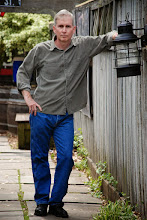
Thanks for inviting me to post here on A Million Blogging Monkeys, Alan!
The other day a few writer friends and I were sitting around talking about, believe it or not, writing. This happens to a frightening degree when writers get together, and if we’re not talking about writing then it’s publishing news, marketing techniques, promotion ideas … or food.
Ahem. Well, food always comes up when I’m around, but that might not be the case among all writers.
Anyway, one of the women had heard back from an agent who had an issue with the pacing in her novel. As we talked, I realized there were several practical techniques I’ve developed over time to increase and/or smooth the pacing in my Home Crafting Mysteries.
First a caveat: Mad pacing is not the be all and end all. My books are light, contemporary cozy mysteries that feature colonial home crafts as the backdrops to the murder and mayhem. The stories move along quickly, which I like. Literary tomes unfold differently, and some thrillers move so fast your hair blows back when you read them. I’m just sayin’ these tips work for me.
Eleven Tips for Increasing Pace
- Start in the middle of action. Long lead-ins with tons of exposition lose a lot of readers right from the get go. Start strong and keep it going – the background information can be feathered in later.
- Avoid long narrative passages as much as possible. Convey information in scenes or, if necessary, in short narrative bursts tucked into scenes.
- Leave out the boring stuff. That includes lengthy transitions, moving characters around, or trying to account for every minute of the day. One way to bypass that information is to:
- Use scene breaks. Used within chapters, they serve wonderfully as transitions and move the story along quickly.
- Have some kind of tension on every page, and at the very least in every scene. In some cases that might take the milder form of internal conflict and in others escalate into action scenes or psychological thrills that make it hard to breathe.
- Write natural dialog. That doesn’t mean realistic dialog, because if you wrote down what people actually say it might not even be readable. So focus on dialog that flows naturally, back and forth. When the dialog is right the pages turn pretty quickly.
- Break up long passages of dialog with action beats to keep the reader grounded. Also, use action beats when one character is talking for a long time, for example recounting a story. This breaks up paragraphs and keeps the scene from feeling like a monologue.
- Allow white space. The more white space there is on a page the faster the reader reads and the smoother the pacing is. Dialog is a great way to do this, as are short sentences mixed with long ones.
- Use description to add to the story, not just the setting. Who cares if the grass is green? But if the lawn if brown, the garbage stinks, and the curtains are drawn across the front windows of a house then the reader receives setting details that also serve as questions and add tension.
- Short chapters. Not everyone agrees with this, but my chapters are usually between six and ten pages. Like potato chips, it’s easy to take just one more.
- End every chapter with a bang – and every scene if possible. Since I write contemporary cozies, that usually doesn’t involve an actual cliffhanger, but I try to always offer a question or intriguing comment to draw the reader on to the next section.
As a writer, what tricks have you developed to smooth pacing? As a reader, what bogs down a story for you?
For more information about me or my Home Crafting Mysteries, check out my website or my blog, Hearth Cricket.
Thanks again, Alan!






















9 comments:
Alan - Thanks for hosting Cricket.
Cricket - Those are very helpful tips; thanks! I think pacing is so very important, and I think my favorites of your ideas are natural dialogue and leaving out the boring stuff. It's all related, too, I think, to showing, not telling.
Great tips here! Thanks for sharing.
Great tips.
CD
These are great, common-sense tips. Thanks.
Margot, it really is related to showing rather than telling, isn't it? And it's funny how much boring stuff I find during the revision process.
Thanks Lisa and Clarissa! Hope one or two come in handy.
Thanks for stopping by, Elspeth!
These are some awesome tips, Cricket! Thanks so much for guest blogging today. You're welcome back anytime!
Long passages of description bog me down, whether of the weather, a person, or the setting. Give me one line and I'm good. Then it's time for some action or dialogue!
I don't add a lot of description to my work, relying more on action and dialogue. I've always liked books that allowed me to use my imagination and hope my readers share that appreciation.
Had a great time, Alan! Hope you'll come over for a spot on Hearth Cricket one of these days.
Alex and Alan, you each mention action and dialog -- both key to rapid pacing. Sometimes I want a little more than a line of description in order to feel properly grounded in the story -- but not much more!
Post a Comment